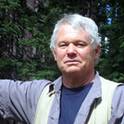
Article
Does the Practice of Silviculture Build Resilience to the Spruce Beetle? A Case Study of Treated and Untreated Spruce-Fir Stands in Northern Utah
Journal of Forestry
(2017)
Abstract
Silviculturists are under increased pressure to develop treatments that increase resistance and resilience to the spruce beetle (Dendroctonus rufipennis Kirby). Multiple silvicultural systems (i.e., group selection, shelterwood with reserves, and others) have resulted in some short-term increases in resistance. However, less is known about how silvicultural systems, especially ones used over many decades, impact resilience; resilience is defined as a minimum amount of Engelmann spruce (Picea engelmannii Parry ex Engelm.) regeneration to ensure continuity of a spruce component in the future stand. To further explore these concepts, silviculturally treated and untreated stands were sampled after a recent landscape-scale spruce beetle epidemic in northern Utah on the Uinta-Wasatch-Cache National Forest. Both treated and untreated stands had no resistance to the spruce beetle but differed in their resilience. Treated stands had increased resilience due to greater and more consistent stocking of Engelmann spruce regeneration than the untreated stands. When silvicultural systems are developed, special attention should be paid to ensure that conditions created after harvests are conducive for regeneration of the desired species (spruce).
Disciplines
Publication Date
2017
DOI
https://doi.org/10.5849/JOF-2016-056R1
Citation Information
James N. Long. "Does the Practice of Silviculture Build Resilience to the Spruce Beetle? A Case Study of Treated and Untreated Spruce-Fir Stands in Northern Utah" Journal of Forestry Vol. 115 Iss. 6 (2017) p. 559 - 567 Available at: http://works.bepress.com/jameslong/270/
